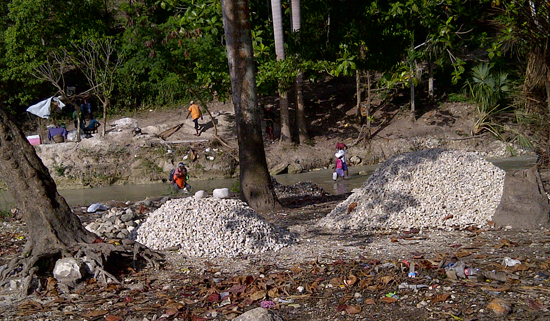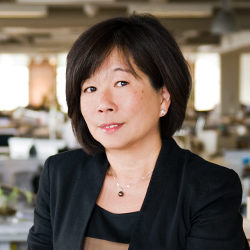
On the second leg of my trip to Haiti, I worked with Sustainable Healthcare for Haiti (SHH), a pro bono organization initiated over two years ago by a group of building and design professionals. I participated in a four member delegation from SHH who traveled to Haiti to look at parcels of land that could be potentially donated for our project.
Prompted by demand for a small pediatric hospital, as demonstrated by Pasteur Antoine Rigaud who runs an orphanage for 100 children as well as a school and a small clinic located in Port of Prince, SHH formed their mission. After the earthquake, the presiding president Rene Preval made a verbal promise of 14 acres to Pasteur Rigaud to build a healthcare facility in Jerusalem, about an hour outside of Port of Prince. This is a parched terrain where a large segment of the Tent Cities population in Port of Prince was relocated by the government. Since then, Pasteur Rigaud has waited to obtain the title to the land so that SHH can proceed with planning, design and fundraising. Last summer, reality set in. Through various contacts we’ve made in Haiti, we learned the current president, Michel Martelly, will not honor the commitment made by Preval; particularly when related to land in Jerusalem. Furthermore, we learned this area has been embroiled in land disputes between large powerful families and the government without a resolution in sight. Without a deed, SHH began to look into alternatives.
In late 2012, we made our intentions known to the current administration and requested land donation for SHH to construct a clinic, if not in Jerusalem, than somewhere within close proximity. The location is important because the local ad hoc community of over 400,000 continue to live in shacks and bunkers without any infrastructure or healthcare services, largely ignored by the central government. When we visited Jerusalem in early 2012, we witnessed how difficult it was to get water, which, on average, required a two hour (round trip) walk with families either carrying water jugs or balancing them above their heads. Last year, while hopes were high for land procurement, SHH drilled a well on the site to improve water accessibility to parts of the community. It could have been a futile effort but luckily, we struck semi-descent water. While the hospital site will be in a different location, the well was a worthy investment. Within the next few days, a pump will be installed. We were advised to leave pump usage management to the community leaders.
Land in Haiti is, for the most part, held privately. Because we are only requesting four to six acres, we’ve been told that the owners could be persuaded to make a donation to our cause as most of them have huge holdings in the hundreds and even up to the thousands of acres. To assist in our search for suitable land, we were introduced to “consultants” who made arrangements for us to meet with local officials who, in turn, arranged for us to see potential parcels. We met with one group in the Town Hall in Croix des Bouquets and experienced the lively local culture when we passed through the town square. We visited parcels of land – some further away from Jerusalem than we hoped – and considered all our options. One acceptable site emerged, even though it was further away from Jerusalem. The access road leading to the site is relatively short; the land is higher and thus requiring less remediation work to prevent flooding during wet seasons. We learned the land owner may be receptive to donating a few acres because in the past they have made other donations. At that time, we decided we will notify the local official of our preference for the land parcel. If the mayor agrees to help us, the protocols thereafter require him to approach the landowner of our intentions. If the owner approves our request, we’ll hit a major milestone and then work toward making the donation legal.
To return to Port of Prince, we took a short cut across a very wide dry river, which holds water during the rainy season; though it often remains passable. We did not see a visibly defined route for vehicles. We relied on our driver’s instincts to weave through the paths of least resistance. When we finally made it across, it became apparent what we just physically experienced: the ups and downs of traversing the riverbed parallels what we hope to achieve with our initiative in Haiti. The road ahead is difficult; the initial task of obtaining a deeded parcel of land appears to be the most cumbersome objective. However, we are fortunate to have been introduced to hardworking local Haitians, many whom have been educated in the US but returned to Haiti prior to the earthquake. They own planning, architecture, engineering and construction firms motivated by passion for Haiti. They will lend us assistance as informal advisors navigating through the approvals required to gain land title and also to maintain objectivity throughout the process. We’re encouraged by recent successes; such as the recently completed Be Like Brit Orphanage, an effort which lasted two years (spearheaded by Brit Gengle’s parents as an homage to their daughter who perished in the earthquake) and the new state of the art 200 bed Mirbalais Hospital sponsored by Partners in Health. We feel challenged, but stand resolute to move forward.









